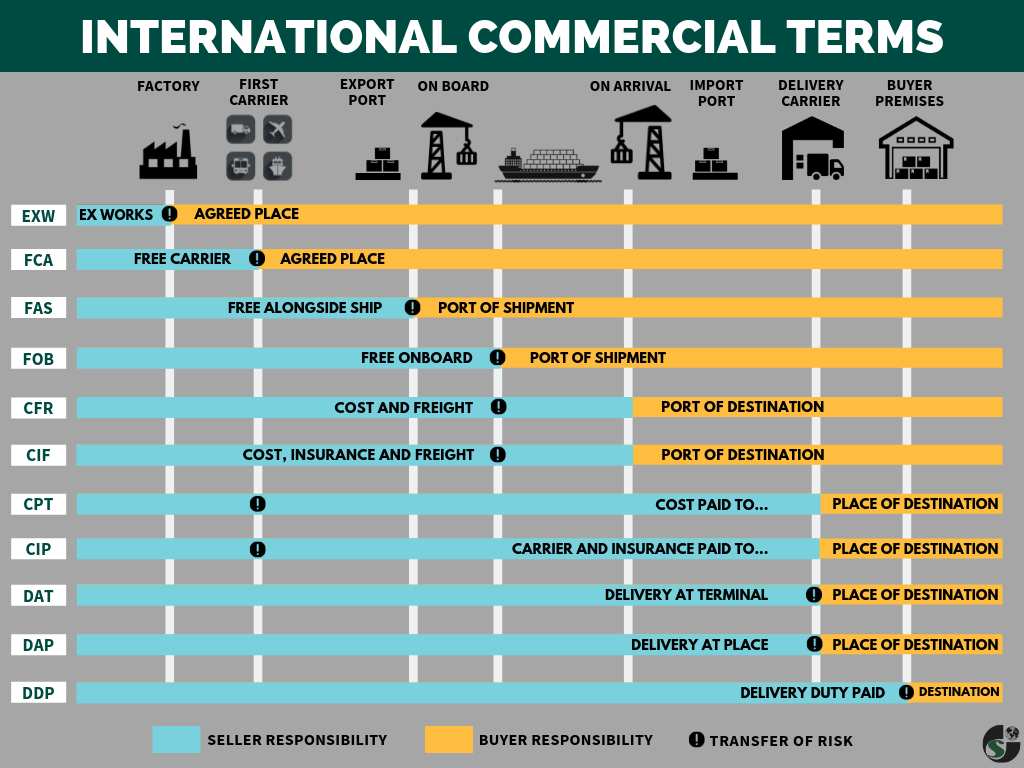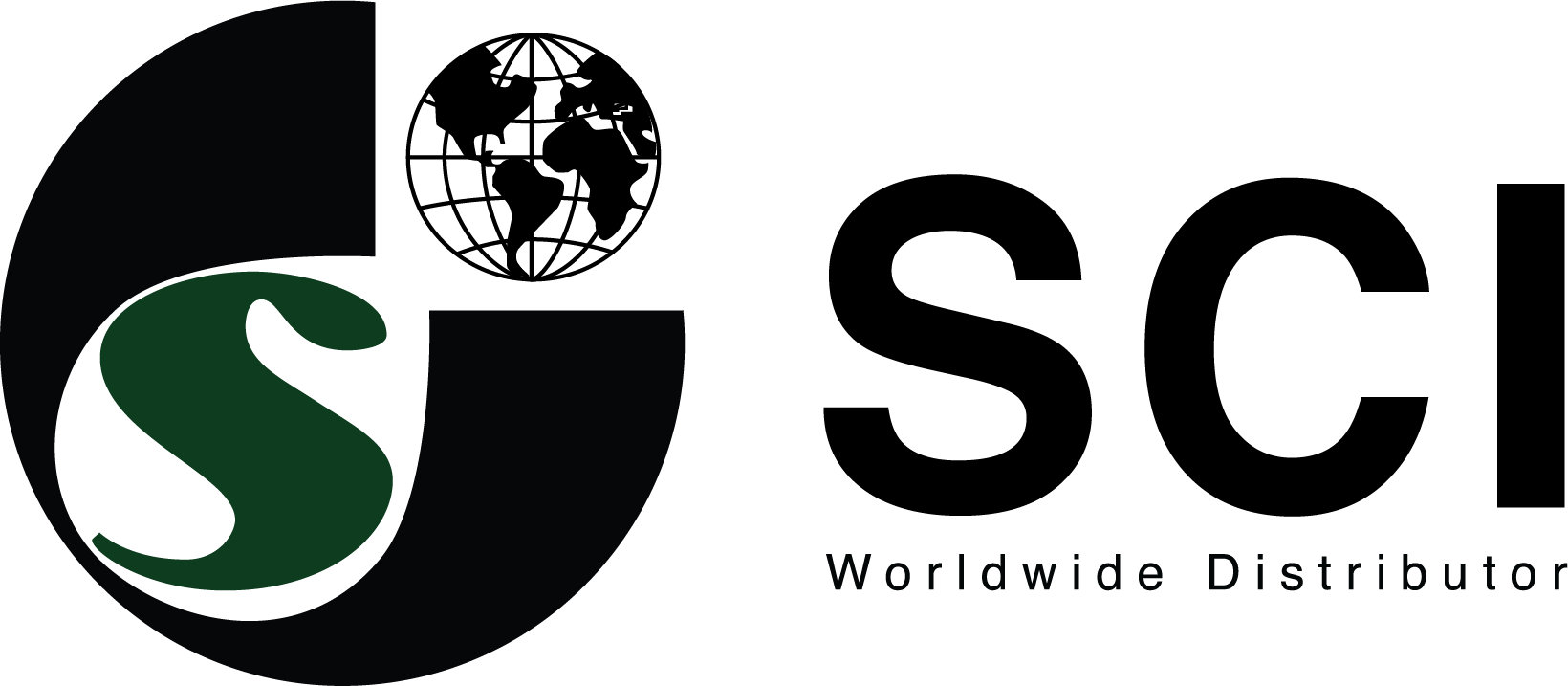Companies in the electronic components industry depend significantly on import and export of goods to ensure smooth operation. Many a times, electronic and LED companies dealing with international trade and freight get stuck in situations where important goods are caught up in transit. This can really hinder your firm's business operations.
International Commercial Terms aka INCOTERMS of 2010 refer to a set of 11 rules defined by the International Chamber of Commerce which define the responsibilities of the selling and buying parties in all international transactions.
In order to keep up with the various logistics updates and the advances in the next decade of global trade, a new set of INCOTERMS®2020 is being put together to be launched next year.

Different Rules Used in INCOTERMS®2010
EXW - Ex Works
Seller Responsibility: The seller packs and makes the shipment available at specified place for transporting.
Buyer Responsibility: The buyer takes the goods onto a vehicle, and oversees all export procedures for shipment and transport to desired destination.
Things to Note: Operational difficulties in cross-border transactions. The seller cannot was their hands off and need to be involved in the export process to facilitate smooth logistics.
FCA - Free Carrier
Seller Responsibility: Export clearance is the sole risk attributed to the seller.
Buyer Responsibility: After goods have been delivered to destination, all risks and costs are to be borne by the seller.
Things to Note: Once the supplier has cleared goods to be "accepted" for shipment, the buyer assumes all risk henceforth from the pre-decided location where shipment changes hands.
Advantages: FCA can be applicable for all transport modes, including multiple ones. The flexibility of the rules makes it suitable for various situations when the buyer arranges the main carriage. When buyer arranges for main carriage of container goods, FCA is the way to go.
FAS - Free Alongside Ship
Seller Responsibility: Supplier is in charge of delivering all the goods, clears it for export and gets it alongside a vessel at an agreed upon port after which the risk transfers to the buyer.
Buyer Responsibility: Loading all components and bears all costs which follow.
Things to Note: This is best suited only for shipments which are transported by sea or inland waterways. Suppliers are usually restricted to use this rule when they have direct access to the vessel for loading.
Advantages: Bulk cargo or non-container based goods are best suited for FAS.
FOB - Free On Board
Seller Responsibility: Supplier is in charge of delivering all the goods, clears it for export and gets it loaded into the vessel at the port upon which the risk is transferred to the buyer.
Buyer Responsibility: All risks and costs after loading the shipment rests with the buyer.
Things to Note: Suited only when goods are transported by sea or inland waterways. Suppliers are usually restricted to use this rule when they have direct access to the vessel. Similar to FAS, bulk cargo or non-container based goods are ideally suited.
CFR - Cost and Freight
Seller Responsibility: Supplier is supposed to completely oversee the transport of goods from the warehouse to the destination port, "including the costs" along with delivering the goods, clearing it for export and loading it to the vessel.
Buyer Responsibility: Once on-board, the buyer assumes all the risk (and costs) - before the main carriage takes place.
Things to Note: Supplier would not be required to cover the shipment with marine insurance against loss or damage.
CIF - Cost, Insurance & Freight
Seller Responsibility: The seller responsibilities are the same as that of CFR except that here, the seller is also responsible for the cost of insuring the shipment.
Buyer Responsibility: Once on-board, the buyer assumes all the risk (and costs) - before the main carriage takes place.
Things to Note: Since this term requires minimal cover, many commercial roadblocks may arise. This would have to be addressed specifically in order to ensure clarity. The responsibility transfers to the customer once the shipment is loaded to the vessel.
CPT - Carriage Paid To...
Seller Responsibility: The seller takes complete responsibility of cost and risk involved in ensuring the components are shipped to the destination.
Buyer Responsibility: The customer should pay for insuring the goods. Upon shipment, the buyer needs to take responsibility and unload the goods as well as transport it back to the warehouse or factory as desired.
Things to Note: Terminal Handling Charges (THC) is payable to the terminal operator. To be on the safer side, the buyer should be aware of whether or not THC is included by the carrier as part of the freight charges. If not, then the buyer would have to shell out money to compensate for THC.
CIP - Carriage and Insurance Paid to...
Seller & Buyer Responsibility: The responsibilities and risks are the same as that of CPT except for the insurance being taken care of by the seller.
Things to Note: The seller is entitled to buy a minimum level of cover to insure the shipment and for this reason, the buyer should be alert to address the level of cover in the agreement so as to avoid later confusions.
DAT - Delivery At Terminal
Seller Responsibility: From the point where the components or parts have been shipped out until they are unloaded at the destination port or terminal, seller assumes full risk and cost.
Buyer Responsibility: The buyer takes over once the goods have been unloaded safely and then it's the personal responsibility to transport the goods back to the warehouse.
Things to Note: The delivery port needs to be specifically addressed or else there are chances of the goods being deported at a different destination. This rule is apt when it comes to containerised shipments as the seller would be in charge for most of the logistics and can be used for multiple modes of transport.
DAP - Delivery At Place
Seller Responsibility: The seller is in charge of ensuring the successful transport of goods from the supplier warehouse to the destination port.
Buyer Responsibility: A major difference from DAT is that the buyer has to unload the goods and take responsibility thereafter.
Things to Note: All import duties, clearances and taxes are to be borne by the buyer as unloading is the buyer's risk. This rule stands good involving all modes of transport.
DDP - Delivery Duty Paid
Seller Responsibility: The seller responsibilities are the similar to that of DAP but also include the local clearance, taxes and duties.
Buyer Responsibility: After the clearance of goods, the buyer can then take over and ensure the safe transfer of all the components back to the factory or warehouse.
Things to Note: As you can notice, this rule emphasizes on maximum risk for the seller. From a buyer's perspective, there is a risk of goods not getting cleared since a foreign supplier may not be well-versed with the complex local rules.
Supreme Components International is a franchised distributor of electronic and LED components connecting suppliers to customers from all across the globe. Our formidable experience in distribution and expertise with international trade allows us to facilitate smooth transactions and expedite delivery requests. As a customer, getting your goods delivered on time is imperative for sustainable and profitable business operations.
Reach out to hello@supremecomponents.com for inquiries!

